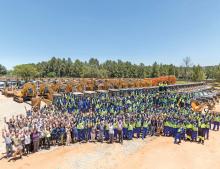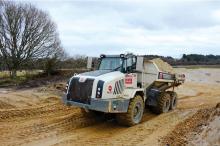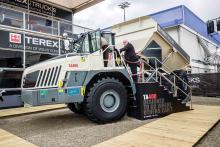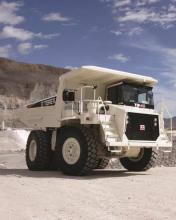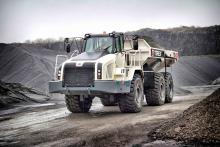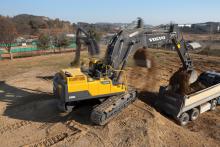
Tough economic conditions across the Asia Pacific (APAC) region have meant difficult times for construction and mining equipment manufacturers, says Clement Cheong,
And while a full recovery remains a distant prospect, opportunities for growth do exist.
The economic success of the Asia-Pacific (APAC) region at the start of the century is well documented, with China the dominant engine driving growth across the region. The country’s annual GDP growth hit an incredible 14.2% in 2007, before falling to a ‘low’ of 7% in 2015.
Countries across APAC benefited from the huge demand globally for China’s raw materials and manufactured goods, and countless companies across the region expanded their operations. All of which drove the phenomenal demand for construction and mining equipment. From 2006 to 2012, for example, demand for heavy equipment in APAC (excluding China) was close to double, from about 63,000 to a peak of 120,000 units. This fell to about 89,000 units in 2015.
Once the boom was over and the dust had settled on the almost inevitable slump that followed, many of those same companies found themselves having to reorganise their finances and scale back operations. By 2014/2015, there was a huge surplus of construction and mining equipment in the market, with plentiful used machines available and an excess of new stock sitting at equipment dealerships. Demand for off-highway trucks in the APAC region (excluding China), for example, fell by almost 63% from its 2011 peak of about 4,100 units to 1,500 in 2015 (all off-highway classes).
There’s no doubt APAC will continue to face a major economic headwind in 2016. The market for new equipment is expected to be flat (at best) in both the construction and mining sectors. However, this won’t continue and some commentators are suggesting we are close to the bottom of the economic cycle and will perhaps see a gradual recovery in the latter half of 2017.
How equipment manufacturers respond to this new cycle of growth will be crucial to their future. At Terex Trucks we are implementing new strategies that will see even closer co-operation with our dealers, allowing us to be more responsive to changing market conditions and in finding better solutions to emergent challenges.
As part of this new strategy we will improve on our existing dealer footprint, and support our dealers capability to supply, maintain and service customers better than ever.
“As US marketing author, consultant, and Professor Philip Kotler said, ‘The sales department isn't the whole company, but the whole company better be the sales department’ ”
Buy or rent?
Construction contractors and mine operators have always had a choice; they could rent or buy the equipment they needed. For mine operators who have longer terms of operation, it makes sense to buy. They feel secure because their future is fairly stable. But construction contractors, particularly those in the earthmoving sector, operate in a shorter-term employment landscape, so rental has often been viewed as a better option.
Some mine owners out-source the blasting, extraction and hauling of the material to a sub-contractor; and the majority of these sub-contractors also purchase their equipment. Like the contractors working in the earthmoving sector, some of these sub-contractors may go down the rental route if the contract period is a short one.
The reason rental is popular among those working on short-term contracts, or in an unstable economic environment is all about commitment and cash flow. Buying a large piece of capital equipment, such as a rigid or articulated hauler, involves risk and ties up resources.
Previously our customers found financing these purchases relatively easy, with financial assistance readily available via the banks. However, as the economy of the region has contracted, banks have withdrawn many of the deals that were previously available.
Under such conditions it’s important to remain responsive to the customer’s needs and flexible in providing the right solutions. Driving the business forward means we and our dealers are thinking and acting creatively about financing. Creating and continuing to offer these innovative solutions, which help get the machines into our customers’ hands more easily, will become an increasingly important source of competitive advantage to us.
Looking ahead
It is always difficult to predict what will happen, but it is not all doom and gloom. While the market might not have reached the absolute bottom of the current cycle in terms of demand – that could happen this year, perhaps with a further fall of 5 to 8% – there is some indication that things will stabilise at the end of 2017. And from 2018 we can expect to see some bright spots, especially in those countries or industries that were not too dependent on Chinese growth.
The market for off-highway trucks in Myanmar, Vietnam and India’s mining sectors, for example, has shown some growth already thanks to the continued local demand for raw materials and that looks likely to continue. And, while demand in Indonesia for off-highway trucks has dropped, taken as a whole, APAC is still an attractive market and will remain an important area of focus for Terex Trucks.


